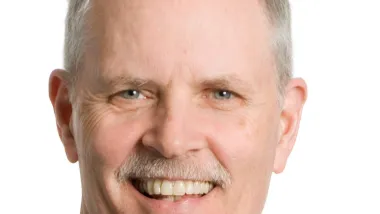"Why did nobody notice it? If these things were so large, how come everyone missed them?" - Queen Elizabeth, on the global credit crunch. Things are so large in the Vaughan Corporate Centre, an edge city about 20 kilometres northwest of downtown Toronto, that a cross-section of Vancouver's downtown peninsula, from False Creek to Lost Lagoon, could fit within five of its blocks. There's a street named Colossus, leading to a cineplex of the same name. The overpass and ramps of the adjacent freeways take up an area the size of the West End. They in turn are surrounded by acres of emptiness, just grass and dirt, awaiting more big boxes, more asphalt.
"Why did nobody notice it? If these things were so large, how come everyone missed them?" - Queen Elizabeth, on the global credit crunch.
Things are so large in the Vaughan Corporate Centre, an edge city about 20 kilometres northwest of downtown Toronto, that a cross-section of Vancouver's downtown peninsula, from False Creek to Lost Lagoon, could fit within five of its blocks.
There's a street named Colossus, leading to a cineplex of the same name. The overpass and ramps of the adjacent freeways take up an area the size of the West End. They in turn are surrounded by acres of emptiness, just grass and dirt, awaiting more big boxes, more asphalt.
This is a landscape built by and for civil engineers. It looks primarily designed to handle snow: wide roads, wider shoulders, lots of space to pile the stuff. It's car-dependent, of course, and high carbon. Wasteful. Hostile. And very vulnerable.
It could all be bulldozed tomorrow and it wouldn't be missed. Its designers and builders, private and public, have produced a place that no one likes very much.
There are similar places all across the Greater Toronto Area north of Steeles Avenue - the so-called 905 Belt, after the area code - stretching in a band from the Pearson Airport to Markham. (Taxi drivers took me twice by mistake to Markham rather than Vaughan, and I couldn't tell the difference.)
One feels free to dump on the Vaughan Corporate Centre because, in truth, Vaughan doesn't much like it either. In fact, they - the owners, the developers, the city and province - hope to more or less bulldoze it and try again. The impetus for change is the extension of the Toronto subway, at a cost of billions, in an attempt to tie this amorphous entity into the city, and to make it a place, much more urban, that people might actually care about.
In the last decades of the 20th century, when the provincial government discarded the kind of controls that had made Toronto one of North America's most enviable cities, suburban growth blew past the borders of the Metropolitan area and sprawled its way north. A time before sustainability was taken seriously, when money was easy, oil was cheap, and expected to stay that way.
Ultimately unconstrained growth generated its own backlash, justifying a freeze on development and the introduction of planning concepts, like smart growth, that had been ignored heretofore. With a change in provincial government came a change in planning emphasis: namely, 'intensification' - using existing developed land to accommodate growth - while at the same saving open space and creating de-facto urban-growth boundaries. Familiar stuff in Portland and Vancouver, but contentious in the Greater Golden Horseshoe.
The Ontario government is proud of its growth plan, now called "Places to Grow," formalized in 2006. New urbanist Peter Calthorpe - who calls it was of the best frameworks for regional planning he has ever seen - is working on an urban-centre plan for another asphalt desert where Yonge Street meets the 407 toll road. And this time, even the developers think its a good idea.
Perhaps Vaughan was a necessary failure - so large it couldn't be missed. But it's unfortunately too far away to be a lesson for the Lower Mainland. Under provincial direction, we too are proceeding with our freeway and arterial widenings, the same big boxes, the same asphalt deserts at the interchanges.
The Queen might wonder, why didn't we notice?
[For a comlete illustrated version of this column, go to http://www.pricetags.ca/pricetags/pricetags106.pdf.]

Planetizen Federal Action Tracker
A weekly monitor of how Trump’s orders and actions are impacting planners and planning in America.

Chicago’s Ghost Rails
Just beneath the surface of the modern city lie the remnants of its expansive early 20th-century streetcar system.

Amtrak Cutting Jobs, Funding to High-Speed Rail
The agency plans to cut 10 percent of its workforce and has confirmed it will not fund new high-speed rail projects.

Ohio Forces Data Centers to Prepay for Power
Utilities are calling on states to hold data center operators responsible for new energy demands to prevent leaving consumers on the hook for their bills.

MARTA CEO Steps Down Amid Citizenship Concerns
MARTA’s board announced Thursday that its chief, who is from Canada, is resigning due to questions about his immigration status.

Silicon Valley ‘Bike Superhighway’ Awarded $14M State Grant
A Caltrans grant brings the 10-mile Central Bikeway project connecting Santa Clara and East San Jose closer to fruition.
Urban Design for Planners 1: Software Tools
This six-course series explores essential urban design concepts using open source software and equips planners with the tools they need to participate fully in the urban design process.
Planning for Universal Design
Learn the tools for implementing Universal Design in planning regulations.
Caltrans
City of Fort Worth
Mpact (founded as Rail~Volution)
City of Camden Redevelopment Agency
City of Astoria
City of Portland
City of Laramie






























